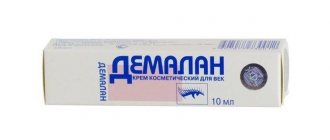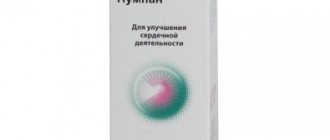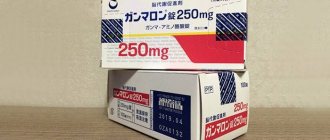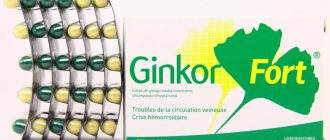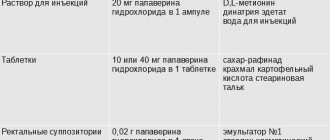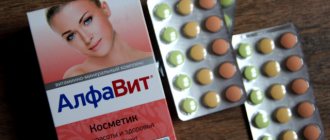Side effects
Headache, dizziness, asthenia, dyspepsia, hepatitis/jaundice, pancreatitis, muscle cramps, myalgia, myopathy, rhabdomyolysis, paresthesia, peripheral neuropathy, anemia, alopecia, skin rash, itching, hypersensitivity reaction (urticaria, photosensitivity, fever, skin flushing , shortness of breath, general malaise, angioedema, lupus-like syndrome, polymyalgia rheumatica, vasculitis, arthritis, arthralgia, increased ESR, thrombocytopenia, eosinophilia); abnormalities in laboratory parameters (increased levels of transaminases, alkaline phosphatase, gamma-glutamyl transpeptidase, skeletal muscle creatine phosphokinase, changes in liver function tests).
Drug interactions Zocor
Simvastatin is metabolized by cytochrome CYP3A4, but does not have an inhibitory effect on this enzyme, therefore it is believed that simvastatin does not change the concentration of substances that are metabolized with the participation of cytochrome. CYP3A4 inhibitors. Potent CYP3A4 inhibitors increase the risk of developing myopathy by reducing the rate of elimination of simvastatin. These drugs include itraconazole, ketoconazole, erythromycin, clarithromycin, telithromycin, HIV protease inhibitors, and nefazodone (see PRECAUTIONS). Cyclosporine or danazol. The risk of developing myopathy/rhabdomyolysis increases when cyclosporine or danazol is co-administered with high doses of simvastatin. Other lipid-lowering drugs that may cause the development of myopathy The risk of myopathy increases when combined with lipid-lowering drugs that are not potent inhibitors of CYP3A4, but can cause myopathy when used alone. Such drugs are gemfibrozil and other fibrates (except fenofibrate, when combined with simvastatin, the risk of developing myopathy does not exceed that of monotherapy with each drug separately), especially when taken with high doses of simvastatin, as well as niacin (nicotinic acid) at a dose of ≥ 1 g/day (see SPECIAL INSTRUCTIONS). Amiodarone and verapamil: The risk of developing myopathy increases when amiodarone or verapamil is combined with high doses of simvastatin (see SPECIAL INSTRUCTIONS). Diltiazem: The risk of developing myopathy is slightly increased in patients taking diltiazem with simvastatin 80 mg (see WARNINGS). Fusidic acid: When taken concomitantly with simvastatin, the risk of myopathy in patients increases (see SPECIAL INSTRUCTIONS). Other drug interactions Coumarin derivatives Simvastatin at a dose of 20–40 mg per day slightly potentiates the effect of coumarin anticoagulants: prothrombin time (international normalized ratio - INR) increases in healthy volunteers from 1.7 to 1.8; in patients with hypercholesterolemia - from 2.6 to 3.4. In patients taking coumarin anticoagulants, the prothrombin time or INR should be determined before starting simvastatin therapy, and very often at the start of treatment. Once a stable level of prothrombin time or INR is achieved, further monitoring should be carried out at intervals that are recommended for patients receiving anticoagulant therapy. When changing the dosage or stopping taking simvastatin, you should also monitor the prothrombin time or INR according to the above scheme. Simvastatin therapy does not lead to changes in prothrombin time and bleeding risk in patients who did not take anticoagulants. Other Interactions Grapefruit juice contains one or more components that inhibit CYP3A4 and may increase plasma concentrations of drugs metabolized by CYP3A4. The increase in the activity of HMG-CoA reductase inhibitors after drinking 250 ml of juice per day is maximum, about 13%, and has no clinical significance. However, drinking large amounts of juice (more than 1 liter per day) while taking simvastatin significantly increases the level of inhibitory activity against HMG-CoA reductase in the blood plasma. In this regard, you should avoid drinking large amounts of grapefruit juice (see SPECIAL INSTRUCTIONS).
Directions for use and doses
Before starting and during the course of therapy, you must follow a low-cholesterol diet. Orally, at an initial dose of 10 mg once, in the evening; for mild or moderate hypercholesterolemia, the initial dose is 5 mg; if necessary, the dose is gradually increased at intervals of 4 weeks. For familial homozygous hypercholesterolemia, the daily dose is 40 mg once, in the evening or 80 mg/day (divided into 3 doses - 20 mg in the morning, 20 mg in the afternoon, 40 mg in the evening). For ischemic heart disease, the initial dose is 20 mg, once, in the evening; if necessary, it is gradually increased at intervals of 4 weeks to 80 mg.
Pharmacological properties of the drug Zocor
Pharmacodynamics. After oral administration, simvastatin, which is an inactive lactone, is hydrolyzed to form a β-hydroxy acid derivative, the main metabolite with high inhibitory activity against HMG-CoA reductase (3-hydroxy-3-methylglutaryl coenzyme A reductase), an enzyme that catalyzes the initial and intermediate stages of cholesterol biosynthesis. The results of clinical studies show the effectiveness of Zocor and Zocor Forte in reducing the content of total cholesterol in the blood plasma, as well as the level of LDL, VLDL and TG, as well as increasing the level of HDL in patients with heterozygous familial and non-familial hypercholesterolemia, as well as mixed hyperlipidemia in cases where increased cholesterol level is a risk factor and diet alone is not enough. A visible therapeutic effect was noted after 2 weeks of treatment, reaching a maximum at 4–6 weeks; it persisted with further use of the drug. If simvastatin was discontinued, the concentration of total cholesterol in the blood returned to the level before the start of treatment. The active metabolite of simvastatin is a specific inhibitor of HMG-CoA reductase, an enzyme that catalyzes the formation of mevalonate from HMG-CoA. Since the process of formation of mevalonate from HMG-CoA occurs at an early stage of cholesterol biosynthesis, it is believed that treatment with Zocor or Zocor Forte should not lead to the accumulation of potentially toxic sterols in the body. Moreover, HMG-CoA, in turn, is quickly converted into acetyl-CoA, a substance that is actively involved in many biosynthetic processes in the body. During the Scandinavian Simvastatin Survival Study - 4S, the effect of treatment with Zocor or Zocor Forte on overall mortality (median time of participation of patients 5.4 years) was assessed in 4444 patients with coronary artery disease and an initial level of total cholesterol in the blood of 212– 309 mg/dL (5.5–8 mmol/L). In this multicenter, randomized, double-blind, placebo-controlled study, it was found that the use of Zocor or Zocor Forte reduced the risk of overall mortality by 30%, mortality due to coronary heart disease by 42%, and the incidence of non-fatal diagnosed myocardial infarction by 37%. Zocor and Zocor Forte also reduced the risk of needing surgery to restore coronary blood flow (coronary artery bypass grafting or percutaneous translumbar coronary angioplasty) by 37%. In patients with diabetes, the risk of developing major coronary complications was reduced by 55%. Moreover, Zocor and Zocor Forte significantly (by 28%) reduced the risk of fatal and non-fatal cerebrovascular accidents (stroke and transient cerebrovascular accident). During the 5-year multicenter, randomized, double-blind, placebo-controlled Heart Protection Study (HPS), the effectiveness of therapy with Zocor and Zocor Forte was demonstrated in 20,536 patients with or without hyperlipidemia who are at high risk of developing coronary artery disease due to with diabetes, stroke or other vascular diseases. Before starting therapy, 33% of patients had LDL levels below 116 mg/dL, 25% had LDL levels between 116 and 135 mg/dL, and 42% had LDL levels above 135 mg/dL. In this study, the use of Zocor or Zocor Forte at a dose of 40 mg/day compared with placebo reduced overall mortality by 13%, the risk of mortality due to ischemic heart disease by 18%, and the risk of developing major coronary complications (non-fatal myocardial infarction or death due to ischemic heart disease ) - by 27%, the risk of the need for surgical interventions to restore coronary blood flow (coronary artery bypass grafting or percutaneous translumbar coronary angioplasty) - by 30%, the risk of the need to restore peripheral blood flow and other types of non-coronary revascularization - by 16%, the risk of stroke - by 25%. Hospitalization rates for heart failure were reduced by 17%. The risk of developing major coronary and non-coronary vascular complications was reduced by 25% in patients with or without coronary artery disease, including patients with diabetes mellitus, peripheral vascular disease and cerebrovascular disease. In patients with diabetes, taking Zocor or Zocor Forte reduced the risk of developing vascular complications by 21%, including operations to restore peripheral blood flow, amputations of the lower extremities and the development of trophic ulcers. In another multicenter placebo-controlled study involving 404 patients, Zocor and Zocor Forte, according to coronary angiography, reduced the progression of coronary atherosclerosis and the appearance of both new areas of atherosclerosis and new total occlusions, while in patients receiving standard therapy, progression of atherosclerotic lesions was observed. lesions of the coronary arteries. Subgroup analysis from two studies that included 147 patients with hypercholesterolemia (hyperlipidemia type IV according to the Fredrickson classification) showed that patients in the Zocora and Zocora Forte groups who took a dose of 20–80 mg/day had lower plasma triglyceride levels decreased by 21-39% (in the placebo group - by 11-13%), the level of LDL cholesterol - by 23-35% (in the placebo group - by 1-3%), all types of lipoproteins, except HDL, by 26-43 % (in the placebo group - by 1-3%), and the level of HDL cholesterol increased by 9-14% (in the placebo group - by 3%). In 7 patients with dysbetalipoproteinemia (hyperlipidemia type III according to the Fredrickson classification), when using Zocor or Zocor Forte at a dose of 80 mg/day, the level of LDL cholesterol, including LDL cholesterol, decreased by 51% (in the placebo group - by 8%), and the level of cholesterol VLDL and LDL - by 60% (in the placebo group - by 4%). Pharmacokinetics Metabolism. The main active metabolites of simvastatin in blood plasma are beta-hydroxyacid and its 6-hydroxy, 6-hydroxymethyl and 6-exomethylene derivatives. The maximum concentration of simvastatin metabolites in blood plasma is achieved within 1.3–2.4 hours after a single dose. There is evidence that the maximum concentration of simvastatin and its metabolites is reached within a period of up to 4 hours and its slow decrease after 12 hours by approximately 10%. When taking simvastatin in recommended therapeutic doses (5–80 mg/day), the linear nature of the AUC profile of active metabolites in the systemic circulation is maintained. The linear relationship persists when the dose is increased to 120 mg. Simvastatin is an inactive lactone that is readily hydrolyzed to beta-hydroxy acid (L-654,969), a potent inhibitor of HMG-CoA reductase. Metabolite L-654.969 and 4 more active metabolites are determined in blood plasma. Inhibition of HMG-CoA reductase underlies all pharmacokinetic studies of beta-hydroxy acid metabolites (active inhibitors). Both are detected in blood plasma when simvastatin is prescribed. About 85% of an orally administered dose of simvastatin is absorbed. Distribution. After oral administration, higher concentrations of simvastatin are determined in the liver than in other tissues. The concentration of the active form of simvastatin (L-654,969) in the systemic circulation is ≤5% of the orally administered dose; 95% of this amount is in a protein-bound state. As a result of active metabolism of simvastatin in the liver (in men - more than 60%), its low level in the general bloodstream is determined. The possibility of simvastatin penetrating the BBB and the blood-placental barrier has not been studied. Excretion. During the initial passage through the hepatic bloodstream, simvastatin is metabolized, followed by excretion of the drug and its metabolites into the bile. During the study, 100 mg of the drug was prescribed in capsules (5 capsules of 20 mg each), C14-labeled simvastatin accumulated in the blood, urine and feces. About 60% of the labeled drug was detected in feces and about 13% in urine. The coefficient of variation of AUC in total blood flow does not depend on the dose of simvastatin. In this study, patients took oral simvastatin tablets in doses of 5; 10; 20; 60; 90 and 120 mg. Eating (as part of a standard cholesterol-lowering diet) immediately after taking simvastatin did not alter the pharmacokinetic profile of the drug. Pharmacokinetic parameters for single dose and long-term treatment with simvastatin demonstrate that simvastatin does not accumulate in tissues during long-term treatment. The maximum concentration of inhibitors in the blood plasma is achieved within 1.3–2.4 hours after taking the drug. In a study of patients with severe renal failure (creatinine clearance ≤30 ml/min), after taking a single dose of the drug, the concentration of HMG-CoA reductase inhibitors in the blood plasma was approximately 2 times higher than in healthy volunteers.
"Crestor"
"Crestor" is one of the analogues of "Zokor". The active component in its composition is calcium rosuvastatin. Additional substances are: magnesium stearate, glycerol triacetate, E172, E171, hypromellose, calcium phosphate, lactose monohydrate, crospovidone, microcrystalline cellulose.
Available in tablet form. Each tablet may contain 5, 10, 20, 40 mg of active substance. Like Zocor, Crestor is a lipid-lowering drug.
It is quite difficult to decide which is better - “Zokor” or “Crestor”.
The main indications for its use are:
- Prevention of the development of cardiovascular pathologies.
- Atherosclerosis.
- Mixed hypercholesterolemia (as an element of complex therapy along with weight loss, physical activity, diet therapy).
- Prevention, therapy of familial hypercholesterolemia.
"Crestor" is contraindicated in the presence of such physiological and pathological conditions as:
- Susceptibility to any component of the drug.
- Age up to 18 years.
- Myopathy.
- Therapy with cyclosporine drugs.
- Pregnancy, lactation period.
- Severe forms of liver pathologies, in particular those associated with an increase in the amount of transaminases in the blood.
While using the drug, negative symptoms may occur such as:
- Tubular proteinuria.
- Asthenia.
- Diarrhea, constipation, pancreatitis, nausea.
- Allergic responses.
- Myopathy.
- Polyneuropathy, headache.
Crestor should be taken orally, whole, without chewing. It is recommended to start drug therapy with an initial dosage of 5 mg; after three weeks, the doctor determines the need to increase the dosage to 20 or 40 mg based on the patient’s well-being.
Patients often ask which drug, Zocor or Crestor, is better. There cannot be a clear answer to this question. Firstly, the drug is based on various active components. Secondly, each person’s body is individual: a drug that is effective for one patient may not be suitable for another patient. That is why a specialist should choose the most suitable medication.
Indications for use
The drug is recommended for use in patients at risk of developing cardiac ischemia. Also at risk are people with pathologies such as:
- Diseases of peripheral circulation.
- Diabetes.
- Cerebrovascular pathologies.
The drug can be used to treat patients suffering from coronary heart disease and hypercholesterolemia. In this case, it helps prevent atherosclerotic pathologies of the heart and blood vessels.
The list of indications for use of the drug Zocor is quite impressive.
It can also be recommended for use in the following cases:
- Homozygous familial form of hypercholesterolemia (in combination with diet therapy and other methods).
- Reduced levels of high-density lipoprotein cholesterol associated with primary hypercholesterolemia that arose during diet therapy.
- Hypertriglyceridemia.
- Increased levels of apolipoprotein B and total cholesterol (in combination with diet therapy).

